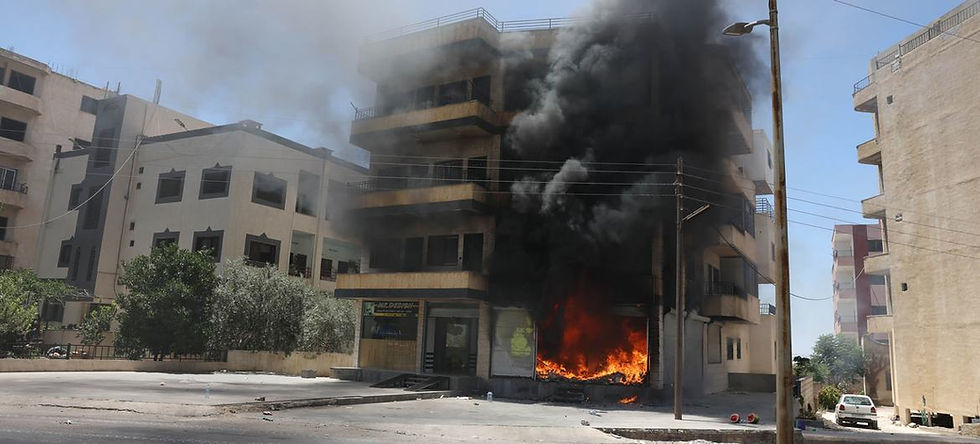ISIS is Back With More Terror in Syria and Iraq
- Marwan Asmar
- Jan 28, 2022
- 3 min read

A fighter with the Kurdish-led Syrian Democratic Forces (SDF) stands guard on a hilltop overlooking the village of Baghouz. Credits: DELIL SOULEIMAN / AFP
Could Daesh be resurfacing in the Arab World. More to the point, could they be mushrooming in the region with greater vengeance and are they setting their eyes for another power grab? They did this when they declared Syria's Raqqa as the self-declared capital of the Islamic Caliphate in 2014 and lost it in 2018.
The two attacks that happened recently in north-east Syria and east Iraq may point to a disturbing trend about the extreme terror movement dubbed as the Islamic State for Iraq and the Levant. This is especially so because it looks as if the attacks have been in almost total coordination, happening a day or two of one another and reported within hours.
The first was an armed onslaught at the Al Ghweran prison in Al Hasakah in north-east Syria. After armed clashes at the gates of the prison between ISIS militants and the guards were a reported car bomb exploded, many Daesh members - up to the hundreds were set free and/or managed to break out from jail.

But here also begins the conflicting reports. The Kurdish Syrian Democratic Forces (SDF) which control the Al Ghweran prison later said they stopped the prison break and apparently there was no escapees. But escapees there were, maybe in their hundreds. Many of these were later captured. But some reports provided by Syrian Observatory for Human Rights states that over 150 prisoners are still at large and maybe more.
This in itself is a worrying because it shows ISIS is back and active despite the American-led war on terror and which has been in existence since 2014. And the Kurdish SDF is part of the coalition fighting the ISIS terror organization.
After 2018 when they war were forced out of Raqqa and dispersed in the region - travelling even to as far as Afghanistan, in addition to the fact that many were imprisoned and some, especially women and children - up to 60,0000 - hauled up in Syrian camps, many talked about the fact many of the ISIS militants went underground in sleeper-cells mode occasionally, carrying terror activities.

This became especially the case in Iraq where, at times, deadly bomb explosions reached as far as Baghdad and its markets. The prison operation in Al Hasakah was especially worrying because it was immediately followed the next day by another deadly operation in the Diyala province.
A total of 11 Iraqi soldiers, including a high-ranking officer was killed on the onslaught at a military base-turned barracks in Hawi Al Azim area in the province where the bloody attack took place in the early hours of the morning. It was a horrific attack by ISIS, and despite the fact that their presence is being played down, the two attacks in less than 24 hours shows the sleeper cells are awake and active.
This is disturbing as well because in both attacks in Syria and Iraq what the strikes show is there is boldness in the terror operations and even a "dare" element, the plans were carefully thought out and Daesh militants believe they could truly regain the upperhand in spite of the replenishment of the Iraqi army which was criticised for allowing the attack to happen; Vigilance is also needed by the US-lead anti-terror coalition and their SDF partners.

The last attacks show also that ISIS may now be on a more active and on a "war path" in light of the fact the UN estimates there is 10,000 of their militants that are still at large in Syria and Iraq. Plus the fact that the Hasakah attack and its ramifications doesn't seem to be ending.
Three days after the prison onslaught clashes continue between ISIS members and SDF forces. They are reported to have besieged Ghweran neighborhood in Hasakah in searching of the militants, an action that is making the people of that area irritable and frustrated for they are now demanding that embargo on them be lifted. But will it? The priority is now to go after the ISIS.
© 2000 - 2022 Al Bawaba (www.albawaba.com)






